
A well-known Kazakh publication has posted an article about Armenia, which writes about what this country is famous for.
“The carpets here are woven with a double Armenian knot. When dyeing the threads, only natural dyes are used - for example, walnut and pomegranate peel, madder root, mulberry, indigo - and four fixatives, so that when washing carpets, the colors do not fade and do not mix,” Leonid Andreasyan, production director of the Megeryan Carpet company, told the Kazakh publication.
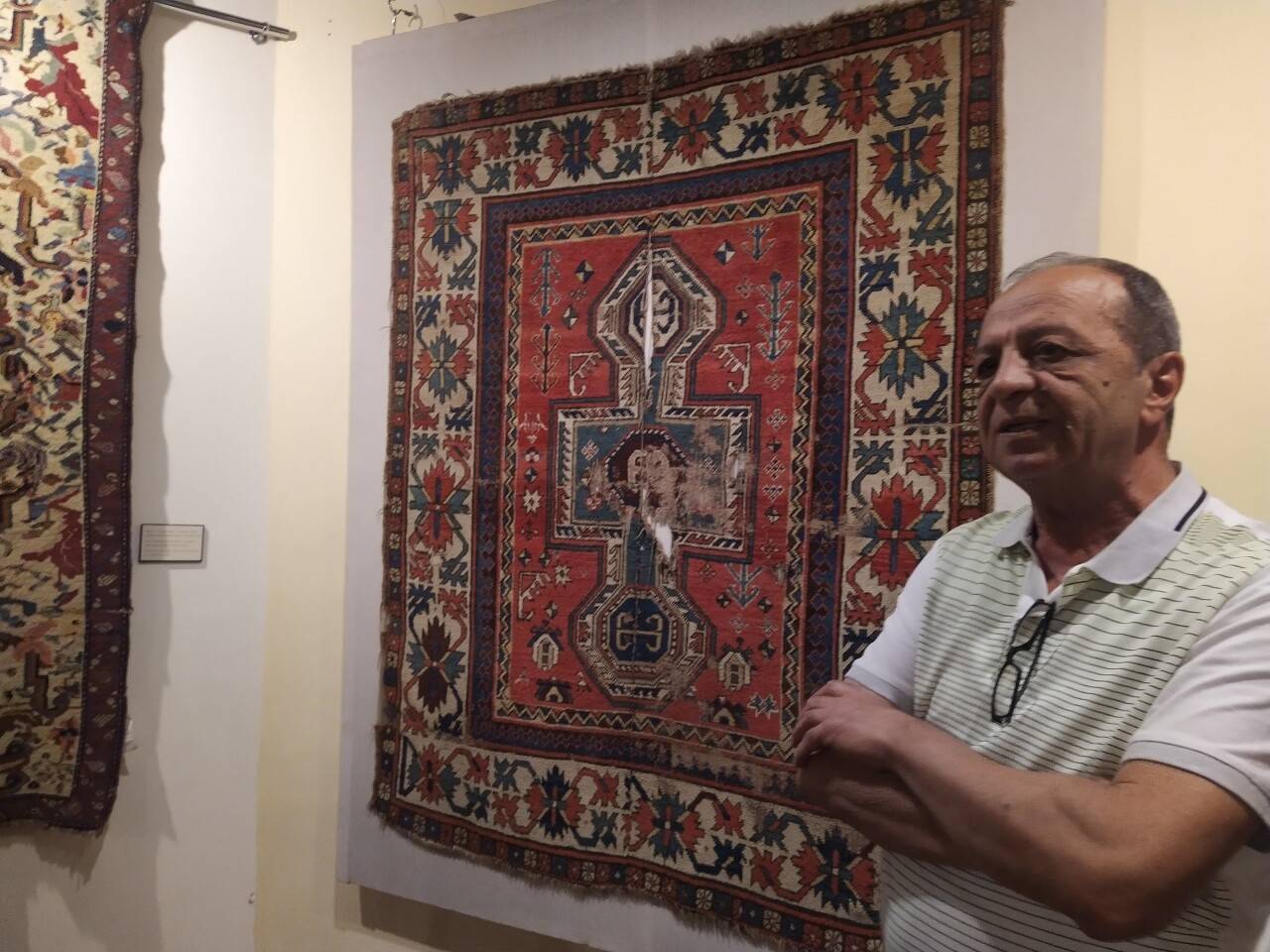
He said that all patterns and ornaments carry a certain meaning.
“There are no meaningless Armenian carpets. There are hundreds of finished handmade carpets made in Armenia in the exhibition hall. All of them are sold at factory prices, except for one type. It is made in the amount of 100 pieces and is presented to people who have made a great contribution to the recognition of the “Armenian genocide” (ed.), the Kazakh edition writes.
Faktyoxla Lab. has tried to find out which Armenian carpets are mentioned in the article.
Let's start with the fact that this is the first such statement. In Armenia, it has been repeatedly stated that "Armenian carpets are clearly different from the carpets of other nations."
After the Patriotic War, a great resonance and indignation among specialists in the field of carpet weaving was caused by a message about the opening in Yerevan of an exhibition of carpets illegally exported from Karabakh by Armenians during the 44-day war, in particular from Shusha. The exhibition showcased 71 carpets out of 160 stolen.
Telling reporters about the “rescue” of carpets from Shusha during the battles for the city, the founder of the Shusha carpet museum, ethnographer Vardan Astsatryan, said: “In Soviet times, it often happened that Azerbaijanis went around the villages and bought carpets from Armenians. Everyone knew about it. Sometimes this was done through Armenian merchants. Priceless treasures left Artsakh, erasing the most important episodes of history. It is a proven fact that carpet weaving is inherent in sedentary peoples, nomads have never been engaged in this. Taking the Artsakh carpets from the places where they were created, the Azerbaijanis wanted to attribute them to their history and culture.”
If you pay attention to the photos of the carpets exhibited in Yerevan, one can see their striking resemblance to those carpets that are in the house of every Azerbaijani family. With a few exceptions, the same patterns, ornaments and motifs.
The symbolism of the Azerbaijani carpet - an eight-pointed star in medallions, an equilateral cross, the scheme of "three worlds" - the Turkic-shamanic picture of the world, the archetype of the "tree of desires", the swastika, S-shaped elements - all this indicates the legacy of ancient Turkic pra-monotheism in our carpets, i.e. faith in Tengri (Tanry), whose image merged in the minds of the people with Muslim ideas about God.
According to experts, these symbols could have arisen only on the basis of the Turkic-Azerbaijani soil of ancient traditions that preserved the legacy of the ancient Turkic faith.
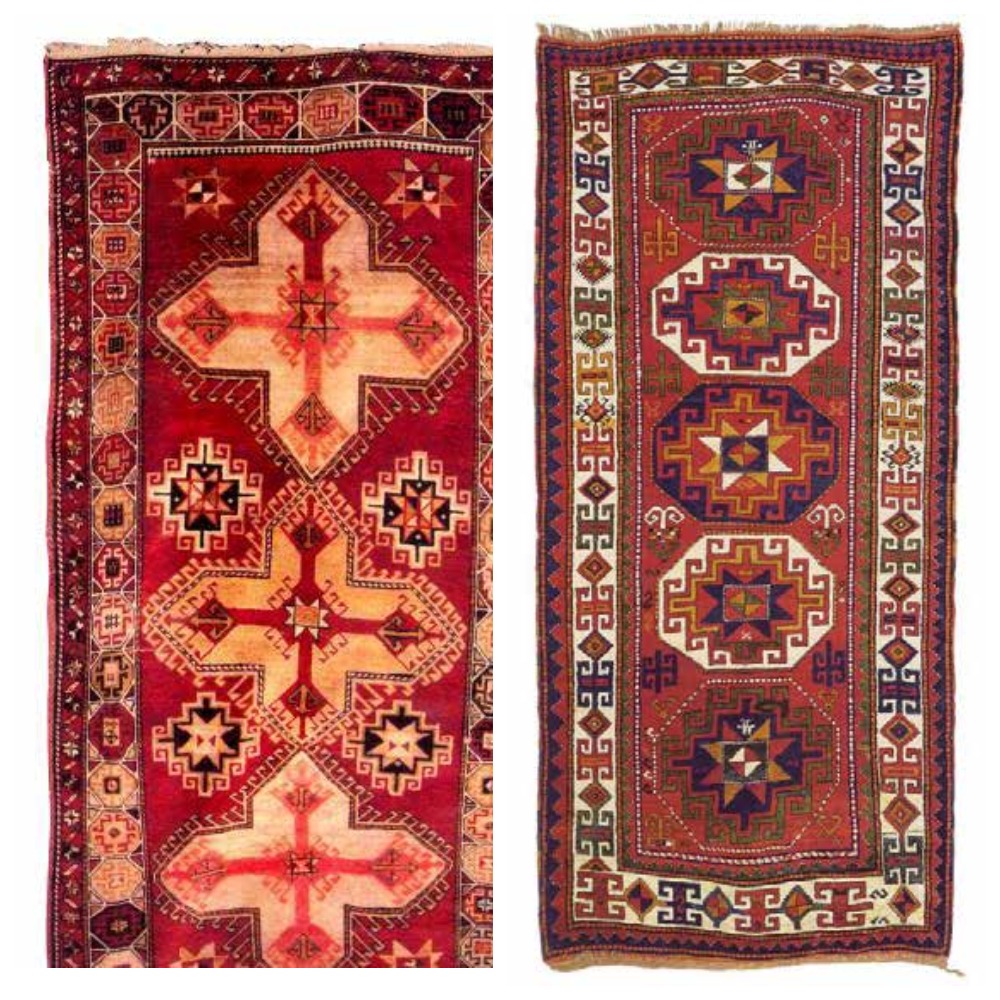
Many ornaments passed off by Armenians as their own appeared on Azerbaijani carpets after the arrival of the Seljuks in the region. Starting from the XI-XII centuries, the invasion of the Seljuk tribes from Central Asia began to Azerbaijan, and then further to Asia Minor. This period was marked by the manufacture of the famous Seljuk carpets. Identical ornamental motifs spread over the vast territory of the region, uniform carpet traditions are established, reflecting the genetic commonality of peoples, their historical and cultural relationships.

Among the Azerbaijani carpets woven in the Seljuk style, there are those whose composition is based on an equal-ended cross with a small rhombus in the middle and paired horn-like curls at the ends of the crosses. This motif is called "kaykalak" in Central Asia and "kekhna-nakhysh" in Azerbaijan. The cross and the rhombus are both geometrically and in meaning opposite to each other. The cross is associated with heavenly fire and light, indicates its movement to infinity; it is a symbol of the Divine Energy revealing itself to the outer world. The equilateral cross is a symbol of Tengri (Tanry), the ancient Turkic single God, the personification of the harmony of the spiritual world among the Turks. The rhombus symbolizes a kind of imprisonment in the boundaries, movement inward and stability. The rhombus-square is associated with one of the primary elements - the earth.
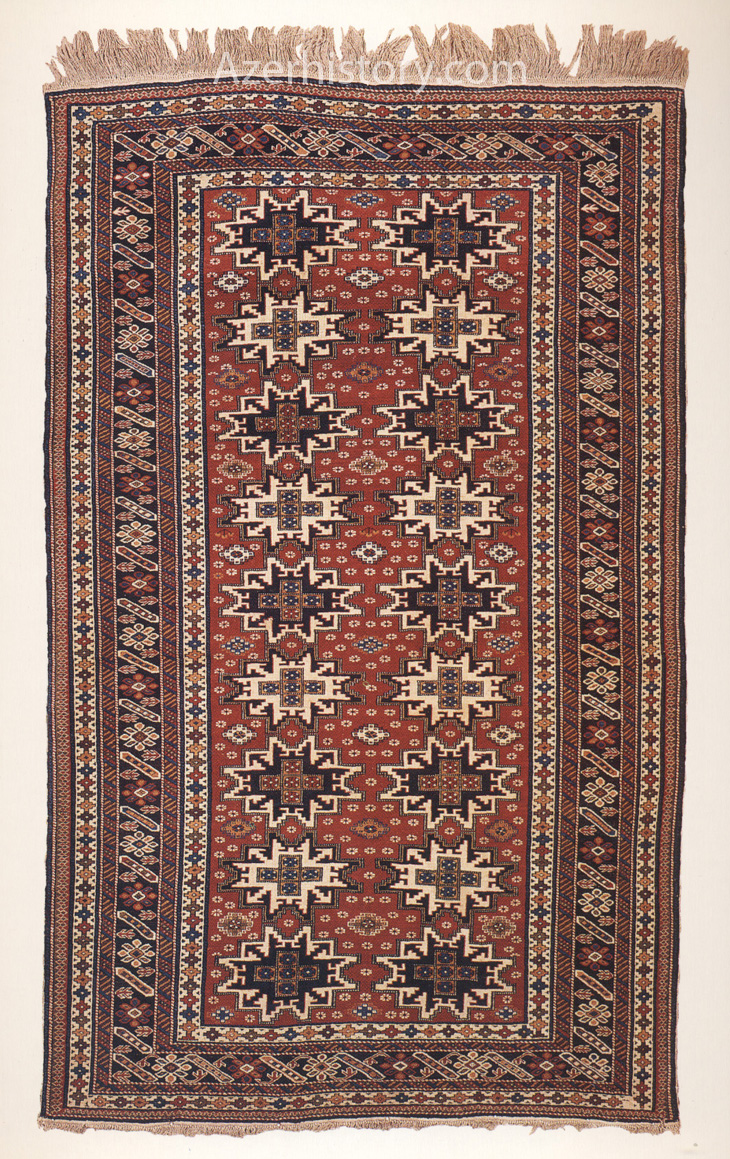
Carpet "Guba"
Images of rhombuses and squares with corners, with triangles or squares at the tops are very widespread almost without change on the carpets and rugs of Azerbaijan. These are Gazakh zili, Shirvan carpet “Bijo”, Karabakh carpet bags for salt (this one was stolen from Shusha and is demonstrated in Yerevan by Astsatryan) and many others. etc. In addition, on Gazakh, Shirvan and Karabakh carpets, a peculiar ornament in the form of triangles is often found.
One of the carpet patterns claimed by the Armenian side is “ajdaha” (dragon). Among the carpets stolen from Shusha there are samples of this ornament.
For a century, dragon carpets have attracted the attention of many foreign and Soviet researchers. The monograph on early Caucasian carpets by Dr. Charles Grant Ellis, dedicated to the 50th anniversary of the Textile Museum (Washington) founded by him, is mainly devoted to dragon carpets. Ellis generally addresses the issue of the origin of dragon carpets. He writes that in many well-known publications Guba carpets (meaning dragon carpets) were attributed to Armenia and that this dubious hypothesis was further deepened in the book 'The History of the Carpet' by F. R. Martin, who, based on the coloring of the Armenian manuscript XIII c., confirms the antiquity of Armenian carpet weaving. Ellis notes that this hypothesis was completely denied by Henry Jacoby and Arthur Pope, who, based on a thorough analysis of the composition, patterns of the middle field and border, as well as the color, attributed “dragon” carpets to Guba, Shirvan, Karabakh and Gazakh, that is, to the Azerbaijani school of carpet weaving. According to Ellis, Armenian carpets include those that have an inscription in Armenian, as well as those created in the Soviet era in the vicinity of Yerevan.
The Czechoslovak scientist Lyudmila Kibalova also noted that carpets with “dragons” were previously considered to be Armenian or Mongolian carpets, and only recently their connection with local Azerbaijani culture has been proven.
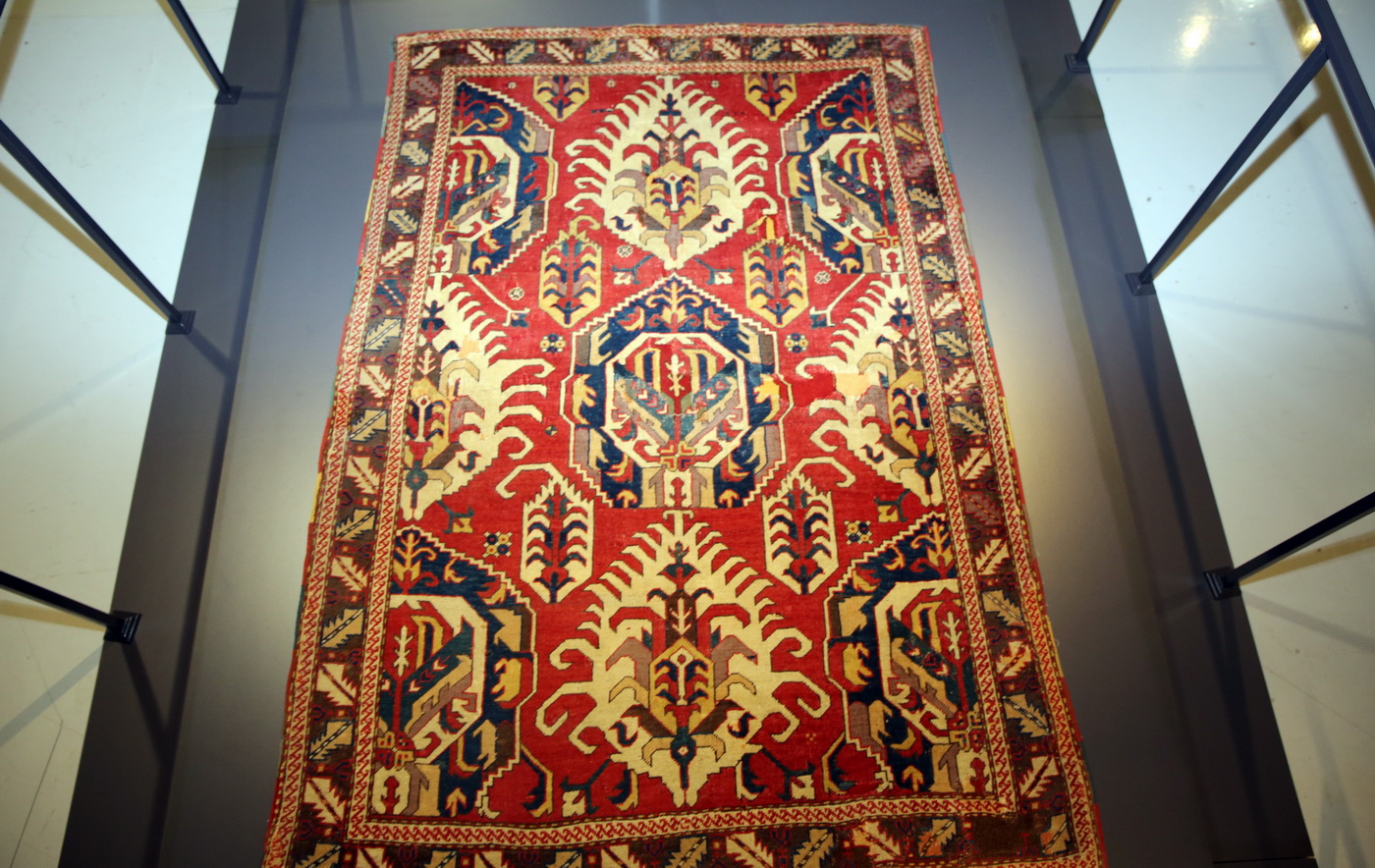
"Ajdaha"
Arthur Upham Pope (February 7, 1881 - September 3, 1969) was an expert on historical Persian art, and he was the editor of the Survey of Persian Art (1939). Pope was also a university professor of philosophy and aesthetics, an archaeologist, photographer, museum director, interior designer, and the co-founder of an international scholarly organization.
The collection of the Louvre contains the famous Karabakh carpet of the "dragon style" called "Chelebi".

"Chelebi"
As experts explain, the medallions of the Chelebi carpet symbolize the sun. Carpets with the composition "Chelebi" or "Barda" were woven in the villages of Karabakh, as well as in the village of Chelebi, 10 km east of Barda. In the center of the middle field there are two identical elements, characteristic of the “Chelebi” carpets. The element "gunesh" or "chelebi", widespread in the carpet weaving of Karabakh, means the sun. It was also used in other groups of Karabakh-type carpets. It held a special place in the decoration of the Ajdahali carpets.
Astsatryan didn’t know that in Karabakh, in Khojavend, carpet sets "dast-khaly-gaba" were woven. The houses in Karabakh were tall and spacious, for this reason several carpets were woven, in accordance with the interior of the houses. The largest carpet in the set is called "khaly" and has a length of 4-7 meters, two side carpets - "kenar" of the same length, but narrower. He calls the samples exhibited in Yerevan cut, not suspecting that these are parts of one composition.
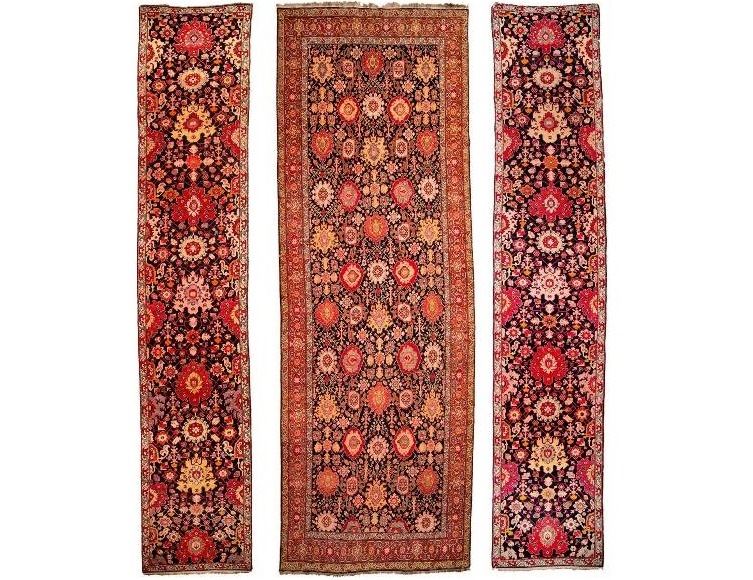
An example is the Hoja carpet, woven in Karabakh. The name of the carpet comes from the name of the village Khojavend. In the 18th century, this carpet was known as "Khojan", then the name was changed to "Khoja."
Next in line is Astsatryan’s statement that the Azerbaijanis allegedly “went through the villages and bought carpets from the Armenians.”
The fact is that, as history shows, the situation was exactly the opposite.
In the second half of the 19th century, carpets and rugs were made in all regions of Azerbaijan. Carpets produced in the Shirvan and Guba districts were sold in Baku, Kazakh and Ganja carpets were sold in Tbilisi, and Karabakh carpets in Tabriz and Istanbul. The main buyers of carpets produced in Guba were local Jews, and carpets produced in Karabakh, Ganja, Salyan and Mugan were Armenian dealers. Carpet weavers in most cases were forced to sell their products for a small price to speculators. Speculators for commercial purposes gave fictitious names to the goods they purchased. In foreign literature, these names exist to this day.
Interestingly, the Armenian historian Sebeos, speaking about the military actions of the Roman emperor Heraclius, wrote that during a campaign in the region he looted and took away as military booty a huge amount of gullabduzluk carpets - lint-free carpets woven from gold and silver threads, silk fabrics, silver dishes, linen clothes.
In addition, a huge number of carpets and rugs after the raids on Azerbaijan were taken away by the Arabs.
The well-known Russian researcher Isaev, by the way, an Armenian by nationality, in his work "Carpet Art of Transcaucasia", examining modern Armenia, the Goycha region, near Lake Sevan (Goychagol), unambiguously writes that only the Turkic-speaking population is engaged in carpet weaving here. That is, Azerbaijanis. Which once again confirms the fact that carpet weaving has never been typical for Armenians and the concept of “Armenian carpet” has appeared only in recent decades.
The carpets stolen by Astsatryan were collected by him from the trophies received by the Armenians after the occupation of Azerbaijani territories. Azerbaijani carpets, taken out of Karabakh after the occupation, are now kept in private collections in Armenia. Thus, the adviser to the ex-president of Armenia Vardan Khachatryan has a large personal collection of carpets, most of which are Azerbaijani carpets. It even has the famous "Namazli" carpet, which is intended for performing prayers.
Shusha was considered from ancient times the capital of Karabakh carpet weaving. Along with other examples of the material culture of the Azerbaijani people, which were kept in the Shusha Historical and Ethnographic Museum, Azerbaijani carpets were also taken to Armenia, and from there to foreign countries and to auctions. Armenians sold at a high price a lot of carpets and rugs dating back to the second half of the 19th century - the middle of the 20th century, which the population of Shusha could not take out of their homes.
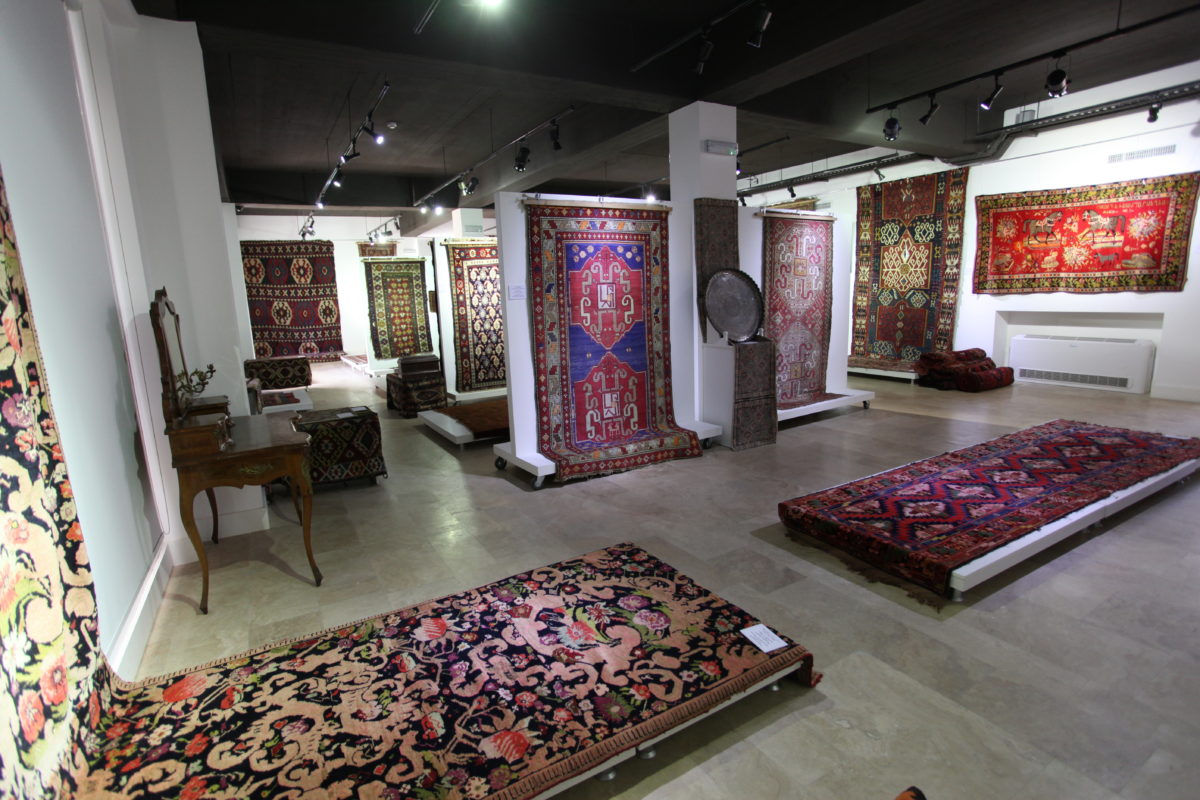
The Shusha branch of the Carpet Museum used to be located in Shusha in the mansion of the Mehmandarov family. In 1992, during the occupation of the city by Armenian troops, employees managed to take out part of the exposition at the risk of their lives. However, after the capture of Karabakh, the Armenians built their workshop for the production of Karabakh carpets and began to imitate their patterns and ornaments. Many of the carpets exhibited in Shusha during the occupation and then taken to Armenia are exact copies of Azerbaijani carpets.
Azerbaijani carpets, as the most famous and most highly valued in the world, were used by Armenians not only for falsification, but also for commerce. During the years of occupation of Karabakh by Armenia, Karabakh carpets could be seen among the lots at various international auctions. Unfortunately, most of them have spread around the world, are now in private collections or under the guise of "Armenian" are shown in museum expositions. But miracles also happen. In 2017, an extraordinary event took place. Elshad Takhirov, an Azerbaijani living in the United States, discovered an Azerbaijani carpet at one of the auctions, exhibited under the name "Antique carpet of Armenia-Karabakh." For 25 years, the carpet was with an Armenian, who then decided to sell it. Takhirov bought the carpet, wanted to find the true owners, and temporarily transferred the product to the Carpet Museum.

This little rug is not antique at all. It was woven in 1971, although it looks to be 300 years old. The Armenian seller, apparently, expected to cheat non-professionals and catch the “Armenian antiquity” bait. But how he intended to do this is not clear, because the date of manufacture is clearly indicated on the artificially aged carpet and the inscription in the Azerbaijani language in Cyrillic is placed "To my son on his birthday." According to experts, the patterns indicate that the rug was woven in Aghdam.
In conclusion, it is evident that on one of the Russian websites dedicated to weaving, a lot of space is given to the Azerbaijani carpet.
It is indicated that in the carpets "Gazakh", "Ganja", "Karabakh" the number of double knots in 1 dm2 ranges from 900 to 1,600, the height of the pile is 8-11 mm. In the carpets "Guba", "Shirvan", "Khila" in 1 dm2 there are 1,600-2,500 knots or more, pile height is 3-5 mm.
When it comes to the so-called Armenian carpets, the resource indicates that in terms of structural indicators, hand-woven Armenian carpets are basically similar to other Caucasian carpets. In other words, this means that such an independent phenomenon as the “Armenian carpet” does not exist.




















